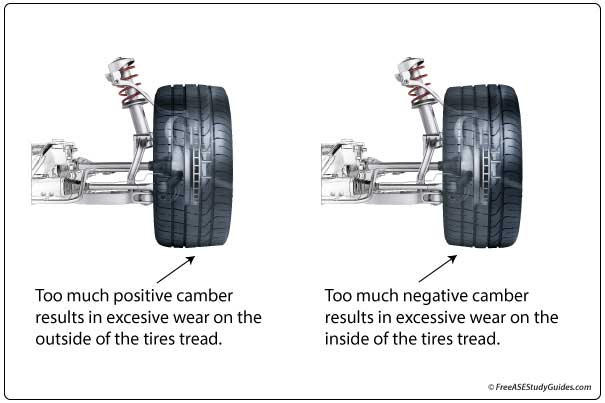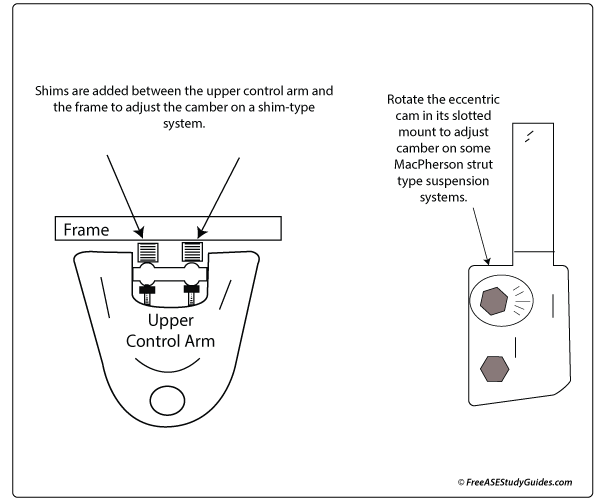The Camber Angle and Tire Wear

Camber is the tilt of the top of the tire measured in degrees viewed from the front of the vehicle. When the top of the tire tilts outward away from the vehicle's center, the wheel has positive camber. It has negative camber when it tilts inward toward the vehicle's center.
An out-of-specification camber angle affects a vehicle in several ways. Symptoms include poor handling, a pull or drift to the side with the most positive camber, and tire and part wear.

Note that manufacturers will incorporate camber into their vehicle's design. Setting the camber slightly positive can improve tire wear while carrying loads. Setting it slightly negative can improve vehicle handling.

Eccentric cams can be used to adjust camber on short arm long arm suspensions. MacPherson strut systems may have a slotted hole located on the strut. A cam is slotted onto an eccentric bolt, and turning the bolt inward or outward adjusts the camber.